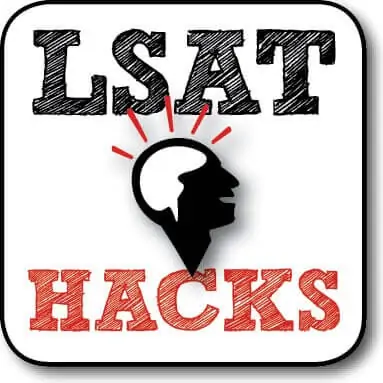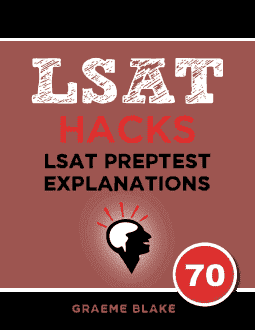QUESTION TEXT: The television network’s advertisement for its new …
QUESTION TYPE: Necessary Assumption
CONCLUSION: The TV station’s ad is worse than the producers’ ad.
REASONING: The TV station’s ad is grossly misleading.
ANALYSIS: This is a classic LSAT error. It makes a comparison, but only tells you about one of the two ads.
The argument tells us that the station’s ad was grossly misleading. But the argument doesn’t tell us anything about the producers’ ad. The argument merely implies that the producer’s ad wasn’t also grossly misleading. So the argument merely assumes that the producers’ ad is better.
___________
- The stimulus wasn’t about how viewers discover the program. The stimulus was only about how effective each ad would be.
- CORRECT. The negation of this answer wrecks the argument. There’s no difference between the ads if this answer isn’t true.Negation: The producer’s ad would have been grossly misleading as well.
- Same as A. The stimulus is not about how most viewers found the program. The argument is about whether or not the TV station’s ad was effective, compared to the producers’ ad.
- This goes too far. The stimulus didn’t say that the producers’ ad was the greatest ad in the history of the known universe. The argument only said that the producers’ ad would have been better than the TV station’s ad.
- Same as A and C. The stimulus was about whether the TV station’s ad was worse than the producers’ ad. This answer doesn’t even talk about the ads, it just gives us a useless fact about the audience.

Free Logical Reasoning lesson
Get a free sample of the Logical Reasoning Mastery Seminar. Learn tips for solving LR questions


Hey Graeme,
Thanks for the response
That definitely helps – particularly the second of your explanations. I guess what I did incorrectly for this question was negate the verb instead of the qualifier. What I should have done is negate the answer choice by negating “most” in the same way you did above, ie) 49% or less do not AND negate the verb. This is something I should know – I just failed to apply in this question, but just to be clear, when there’s a qualifier like “most” in a necessary assumption question, we negate both the qualified and the verb, correct? So answer choice E), negated, would correctly read: HALF who become loyal do miss the first episode?”
Thanks again for your help, Graeme
I’m not sure what you’re referring to. Here’s how I view negations:
Step 1: What are they saying?
Step 2: What would make that not true.
e.g. Most people in this room are wearing hats (51 out of 100), NEGATION: half of people in this room are wearing hats (50)
All americans are nice (literally everyone) NEGATION: One guy in arkansas, bob, is a jerk.
I don’t focus on negating this word or that work. I want to understand what it says, and then make it not true. I think this is a more robust approach, because there’s an endless way to phrase things.
Thanks!
My question was just about what exactly it is that we negate in the answer choice and what we don’t negate. So you using your example above: All Americans are nice
negated this could either be: All Americans are NOT nice OR there’s one American who’s an ass — both would make the statement ‘not true’ as you mentioned above.
So in the former negated version, the verb “nice” is negated, but in the latter one, the qualifier “All” is negated. So for the original question (#13), what I did incorrectly was negate the verb and not the qualifier. It makes sense now, though! So thanks for your help
All, I see. Yes, there’s multiple ways to negate a sentence in English.
Small note: It should be “not all americans are nice”.
“All americans are not nice” = all americans are mean.
Hi Graeme,
Thank you for gratuitously offering these free LSAT explanations – they are undoubtedly a tremendous help to those studying for this beast of a test!
Question about your explanation of answer choice E); I don’t know if I would characterize it as a “useless” fact about the audience. I mean, the stimulus says that people who tune in to the first ep till be unlikely to watch subsequent eps, so There’s clearly some relevance to the link between the ad and those that watch the first ep. However, the reason I believe E) is wrong is because it doesn’t tell us anything about what type of people will continue to watch the show. The producer’s ad intended to attract a certain viewer demographic, so we don’t know if those that continue to watch after tuning in to the first episode will include those individuals that the producer’s ad favoured to continue watching. In other words, if we negate E) and also add to the answer choice the part about whether those that were favoured by the producer’s would continue watching, then I think E) would be correct. I apologize if this was confusing – if you’d like, I can definitely clarify my question.
Thanks!
Good question. I’m still thinking about it, but here’s my current thoughts:
E makes the same error as the stimulus. It tells us about people who DO become loyal fans, but it doesn’t tell us about people who watch a show but DON’T become loyal fans. If most of the latter group also did not miss the first episode, then E has told us precisely nothing.
E is an implied comparison that only gives information about one side.
Also, negating “most” is useless, except in cases where the conclusion is also about a “most” statement. The negation of most is “half”, because half is not most. (Technically “half or less”, but you should take negations at their least strong).
So saying “half of people who become loyal fans do miss the first episode” vs “only 49% of people who become loyal fans do miss the first episode.” has no impact.
That’s a better dismissal than the one I gave above, I think.
Note: I’m actually not sure about your own point, though I suspect the bit about “most” means the answer could never be correct. This is true of almost every necessary assumption answer that uses “most”.
Were you saying it might be correct if we knew of a difference between the two ads? The stimulus is flawed precisely because it doesn’t cite any differences.